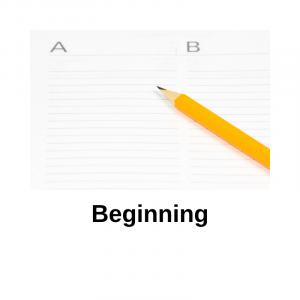9 Paraphrasing and Quoting Skills
Paraphrasing
Paraphrasing is an everyday skill we all use to relay information from one source to another. We may retell a simple story we heard at work, relay information from one person to another in our household or recap a news story we heard on the television or radio. In doing so we are using paraphrasing techniques.
At university paraphrasing is a fundamental skill that is often expected to be demonstrated from the very first semester. It is a helpful skill because at university you are operating within a community of academic thinkers. You need to be able to address the ideas of others with integrity while also contributing your own original thoughts to the learning environment.
This chapter will enable you to identify and formalise the paraphrasing techniques you may already be familiar with, plus teach you some new skills.
In academic writing paraphrasing is a set of techniques used to express another person’s ideas in your own words. Therefore, each time material is paraphrased it must include an in-text citation and end of text reference (more about this in the referencing Chapter 10). To use someone else’s ideas without giving appropriate credit is call plagiarism and may incur academic penalties.
Watch a Youtube video by Scribbr “How to Paraphrase in 5 Easy Steps”.[1]


Paraphrasing Techniques
-
Start by reading the passage several times to gain understanding.
-
Note down key concepts as you read.
-
Write your own version of the passage, without looking at the original. This will test if the key concepts have been remembered yet you are capable of putting the ideas into your own words.
-
Compare the two texts (the original with your own) and edit any sections that may be too close to the original wording.
-
Cite the source of the original text to avoid plagiarism [see Chapter 10: Referencing].
Paraphrasing Tips
a. Start at a different point in the original passage (re-order the material).
b. Use synonyms.
c. Change the sentence structure, e.g., active / passive voice (see Chapter 7: Sentence Basics).
d. Break up long sentences or combine shorter ones.
- Review the example of a paraphrased paragraph on the video above.[2]
Paraphrasing Example
Original Text
Just seven kilometres from Brisbane’s city centre, UQ College is located in the beautiful grounds of The University of Queensland St Lucia Campus.
Considered one of the most beautiful campuses in the world, UQ campus is a vibrant mix of old sandstone buildings, modern architecture, parklands and lakes. It’s a city within a city, with everything you need to study, live and relax[3].
Paraphrasing Notes
Key information: UQ College is located at The University of Queensland St Lucia Campus; it is close to the city centre of Brisbane; the campus is well-equipped.
Paraphrased Text
UQ College is only seven kilometres from Brisbane’s central district at The University of Queensland St Lucia Campus and is well equipped with everything a student needs. It is both architecturally pleasing and has beautiful natural spaces in which to study and relax.
Techniques Used in the Above Paraphrase:
- It began at a different point – rearranged the information
- It used synonyms. For example, “Brisbane’s city centre” = Brisbane’s central district.
- Instead of listing categories, it grouped things together. For example, “a vibrant mix of old sandstone buildings, modern architecture” = architecturally pleasing; “parklands and lakes” = natural spaces.
- It kept key facts. For example, “UQ College”, “seven kilometres from Brisbane” and “The University of Queensland St Lucia Campus”.
- It alters the sentence structure and now there are two sentences instead of three.
- It maintains the original meaning.
Practise
Practise paraphrasing the following text. Follow the steps above and identify which techniques you are using. Maintain the original meaning of the text.
Original Text
In your chosen courses you will engage in practical tasks that relate to real-world uses of your academic skills and knowledge. Your teachers will encourage you to develop your own learning style and help you to achieve your study goals.
Classrooms and laboratories are equipped with the latest technologies and equipment and our courses cover a variety of topics and use a mix of course materials, including textbooks, video, audio and digital content[4].
Quoting
What?
In short, a quote in Academic Writing means to repeat words that someone else has said or written. It is represented within a body of text using double quotation marks. A quote is verbatim. As soon as you deviate from the original words, it is no longer a direct quote and can be misinterpreted as poor paraphrasing.
Why/When?
Use quotes sparingly in Academic Writing. The following is a useful guide to when it may be appropriate to quote material rather than paraphrase, though paraphrasing is considered better academic practice.
- If you are analysing an author’s position/claim/argument and want to state it clearly before addressing it.
- The language of the passage is instrumental to its meaning, for example, poetry, creative writing, technical or medical language.
- You are completing an in-depth analysis of a text, for example, studying literature and analysing Shakespeare’s plays.
- You wish to add weight or credibility to your own argument by enlisting the words of an expert for support. Use this very sparingly.
How?
The following information, plus more, is available through the UQ Library Style Guide for APA 7th style referencing[5]. There are many different referencing styles, so always confirm with your lecturer/tutor which style is being used for your course. It can vary from course to course across programs.
A direct quotation reproduces word-for-word material taken directly from another author’s work, or from your own previously published work. You cannot resubmit work from a previous assessment submitted via Turnitin. This will raise a red flag as plagiarism and may lead to an academic misconduct enquiry.
If the quotation is fewer than 40 words, incorporate it into your paragraph and enclose it in double quotation marks. Place the in-text reference before the full stop.
David Copperfield starts with “Whether I shall turn out to be the hero of my own life, or whether that station will be held by anybody else, these pages must show” (Dickens, 1869, p. 1).
If the quotation comprises 40 or more words, include it in an indented, freestanding block of text, without quotation marks. At the end of a block quotation, cite the quoted source and the page number in parentheses, after the final punctuation mark.
Whether I shall turn out to be the hero of my own life, or whether that station will be held by anybody else, these pages must show. To begin my life with the beginning of my life, I record that I was born (as I have been informed and believe) on a Friday, at twelve o’clock at night. It was remarked that the clock began to strike, and I began to cry, simultaneously. (Dickens, 1896, p. 1)
In the following Chapter 10 you will learn about referencing paraphrases and quotes in your own academic writing.
- Scribbr. (2019, October 31). How to paraphrase in 5 easy steps [Video]. Youtube. https://www.youtube.com/watch?v=oiM0x0ApVL8&t=235s ↵
- All Paraphrasing techniques and tips are taken from the cited Sribbr Youtube video, for continuity of content. ↵
- https://www.uqcollege.edu.au/about-campus ↵
- https://www.uqcollege.edu.au/programs-tpp ↵
- https://guides.library.uq.edu.au/referencing/apa7/direct-quotes ↵
the practice of taking someone else's work or ideas and passing them off as one's own
a word that has the same or nearly the same meaning as another in the same language, e.g. happy, joyful
in exactly the same words as were used originally



